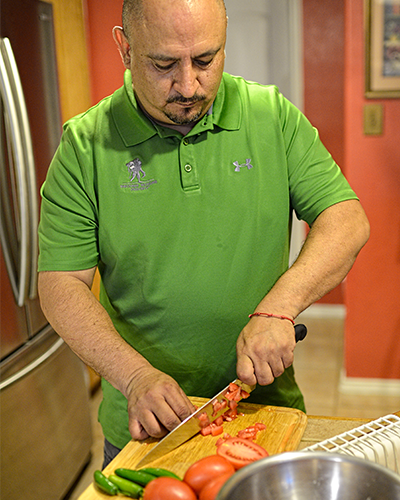Trusting Pizza to Deliver

Feb. 9 is National Pizza Day and indulging in one of the most popular foods in the world, guilt-free, is possible.
The key – says Jade Scott, a Physical Health and Wellness coach with Wounded Warrior Project® (WWP) – is balance.
“I highly encourage treating yourself,” Jade said. “It’s important to find a balance between those healthy foods that are good for you and those that you simply enjoy from time to time. Doing so will help create sustainable habits over time versus if you are too strict, which can often lead to bad habits.”
Jade helps provide nutritional education and coaching to warriors and family support members on their journey to a healthier lifestyle. Through in-person cooking classes, interactive workshops, and live webinar sessions, warriors can develop better nutrition habits leading to a more positive relationship with food — even pizza.
Here are some healthy tips for enjoying a slice on #NationalPizzaDay!
Fresh vs. Frozen Pizza
When in doubt, make it yourself! Choosing this route allows you to take control of your meal and know exactly what’s in it. With frozen meals, you may run into the issue of extremely high sodium, which preserves meals for long periods but is harmful to the body in large amounts. Restaurants display calorie counts on their menus, which is helpful, but doesn’t necessarily paint the whole picture. Although choosing a slice from a restaurant or popping a frozen pizza in the oven may seem the most convenient, it’s likely not the most nutritionally beneficial.
Hearty Ingredients
There’s a lot that goes into making a pizza, so start with the foundation – the crust. A good rule of thumb is to choose a whole wheat/whole grain crust. This type of crust is packed with more protein and fiber, and includes several vitamins and minerals such as iron, magnesium, and vitamin B, which can’t be found in traditional white flour crusts. If you have a gluten allergy, opt for cauliflower, almond, or gluten-free crusts. Choosing one of these alternative crusts can also help avoid a carb overload.
For the sauce, the best option is to make your own. If you’re going to buy the sauce at the store, buy organic, when possible, read the label, and remember less is more. Next, sprinkle the cheese lightly and think of it as a garnish, not the primary topping. Top it off with wholesome veggies to get in your serving of vegetables for the day while adding a variety of flavors and textures. For meats, it’s best to limit high fat and processed meats; think less pepperoni, sausage, and bacon, and more turkey and chicken.
“I like to compare nutrition to a piggy bank,” Jade shares. “Any time you cook at home or feast on healthy meals, you are depositing into that bank or investing in yourself and your body. When you want to take some deposits out to treat yourself to that slice of pizza or whatever it may be, you can afford to do so because you’ve made those investments over time.”
Developing healthy habits is essential to improving the overall wellness of injured veterans. By combining these healthy nutrition habits with regular physical activity, improved sleep, and increased mobility, warriors and their families can set and achieve goals for a healthier life.
Has National Pizza Day inspired you? Check out these healthy pizza recipes!
Contact: — Krissty Andaur - Public Relations, kandaur@woundedwarriorproject.org, 904.760.6957
About Wounded Warrior Project
Since 2003, Wounded Warrior Project® (WWP) has been meeting the growing needs of warriors, their families, and caregivers — helping them achieve their highest ambition. Learn more.